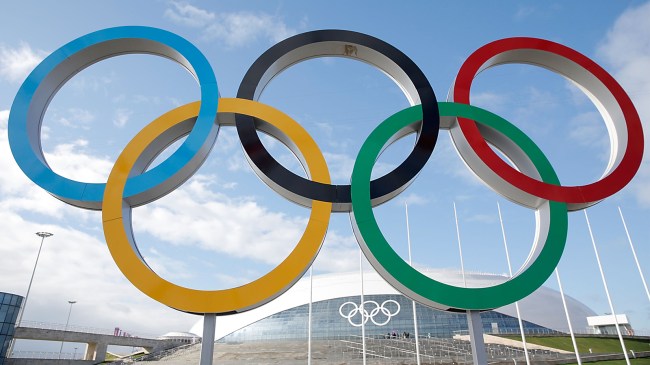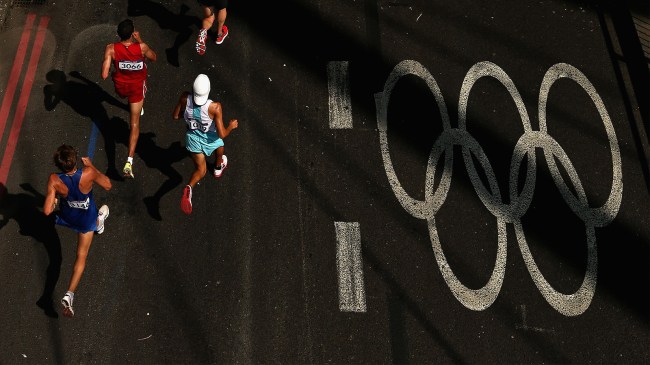
Getty Image
In 1896, the Olympic Games were resurrected in the country where the competition was first held all the way back in 776 B.C. Athletes from around the globe gathered in Athens for an event that drew a fair amount of inspiration from Ancient Greece—including the running of the first-ever marathon, a race that spawned one of the wildest sports stories in history thanks to what unfolded in St. Louis less than a decade later.
The first marathon was technically “held” when a Greek messenger supposedly ran 26.2 miles to deliver the message of a military victory over the Persian army to an assembly located in the civilization’s capital.
Now, I’d argue that the fact that he collapsed and died as soon as he shared the news is a testament to why it’s a bad idea to try to follow in his footsteps, but countless people have viewed it as a challenge while willingly attempting to cover the same amount of distance as quickly as possible.
The first collection of brave souls to do exactly that were the runners who participated in the marathon at the 1896 Olympics, as the race through the streets of the eponymous city marked the first time a competition of that distance had been officially organized (it was only appropriate a runner hailing from Greece walked away with the gold medal).
When the Olympics were held in France in 1900, the marathon was marred by controversy. A number of runners veered off of the course at various points in the race due to lackluster signage and also had to deal with muddy conditions, which led to the two Frenchmen who secured the gold and silver being accused of cheating after crossing the finish line with comparatively pristine clothes.
However, that had nothing on the comedy of errors that transpired in America four years later.
The wild story of the disastrous marathon at the 1904 Olympics in St. Louis

Getty Image
On August 30, 1904, a grand total of 32 runners from around the world gathered in St. Louis in the hopes they’d be the first person to cross the finish line. When everything was said and done, only 14 of those men were able to complete the race thanks to the wild series of events that transpired over the course of the next few hours.
While some of the competitors had previously competed in the Boston Marathon (which was held for the first time in 1897), most of them had never entered a formally organized long-distance race. The course itself was actually “only” 24.85 miles, but it still posed quite the challenge thanks to a number of hills, dangerously dusty conditions, and a grand total of two water stations located at Mile 6 and 12.
The marathon began in a city that hadn’t bothered to close its streets for the event, which meant the runners had to grapple with uneven cobblestones while weaving around trolleys, cars, wagons, and pedestrians before making their way into the countryside.
The aforementioned dust forced one runner to withdraw after he began to hemorrhage courtesy of the particles that had managed to tear away at the lining of his throat and stomach. However, he was far from the only casualty.
Another person dropped out after they started vomiting on the side of the road, and a Cuban participant laid down to take a nap after his stomach was seized by the cramps that set in after he tried to refuel with the rotten apples he’d found in an orchard next to the course.
Oh, there was also a guy who had spent a mile running off of the course because he’d attracted the attention of a pack of wild dogs who decided to chase after him.
American Fred Lorz was around nine miles into the race when his legs started cramping up, and he got the chance to recover with the help of the people who let him hop into their car, where he remained for 11 miles. He ultimately became the first person to cross the finish line around three hours after the race kicked off, and while he was presented with a laurel and a gold medal, he forfeited the prizes after getting called out for cheating (he insisted he’d only accepted them as a joke).
Meanwhile, fellow American Thomas Hicks was dealing with some issues of his own. His trainers denied his request for water at the 10-mile mark, and when he started to fade at Mile 17, they whipped up a remedy with the help of some egg whites and strychnine (a poisonous substance that can be used as a stimulant in small quantities).
That stopgap only did so much to help Hicks turn things around, although he got a second wind when he heard he still had a chance to win after learning Lorz had been DQed.
He got another egg white and strychnine cocktail with around two miles left (an apt descriptor when you consider he washed it down with some brandy) but ran into a bit of a setback when he started hallucinating and became convinced he still had 20 miles to go with one mile left.
Thankfully, a final dose of egg whites and brandy were enough to propel him to the final stretch, and while his trainers needed to drag him across the finish line, he was nonetheless named the official winner.
Olympic officials debated discontinuing the marathon due to what transpired that year (the head of the Games described the length as “indefensible on any ground”) but ultimately opted to stick with it, and it’s remained a staple of the event ever since.